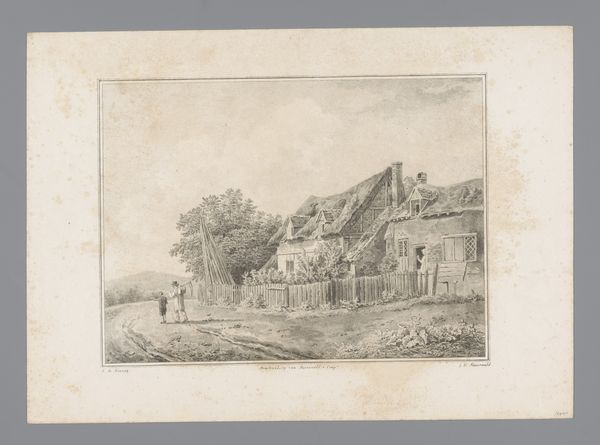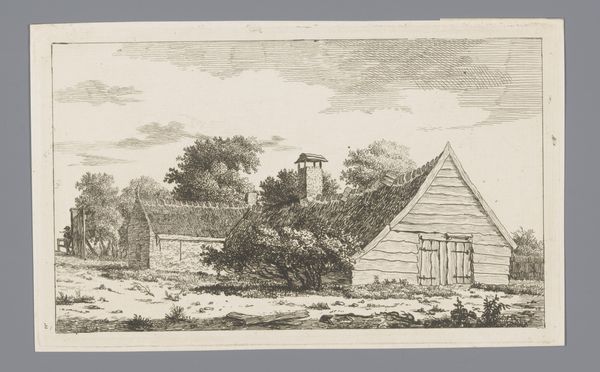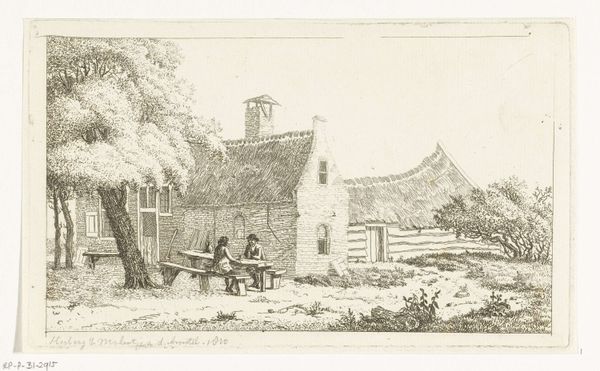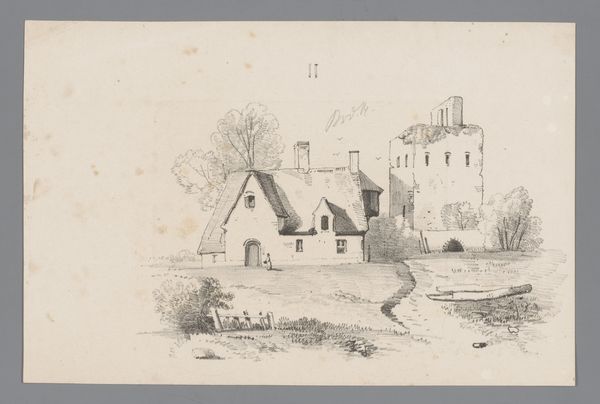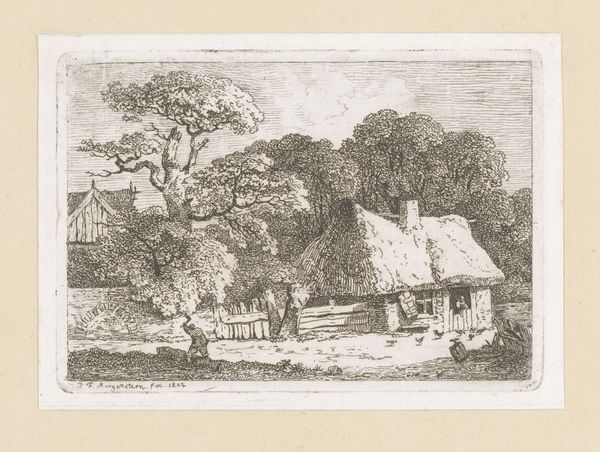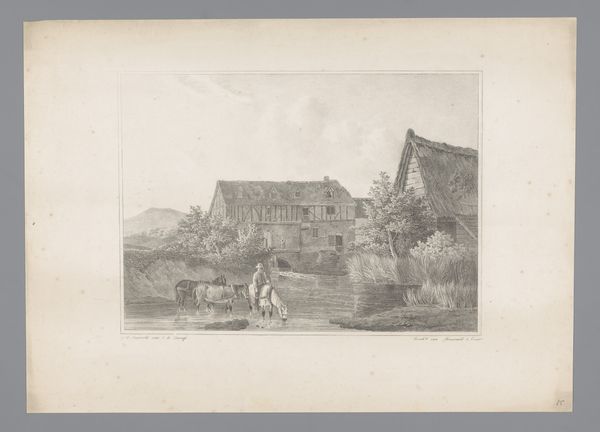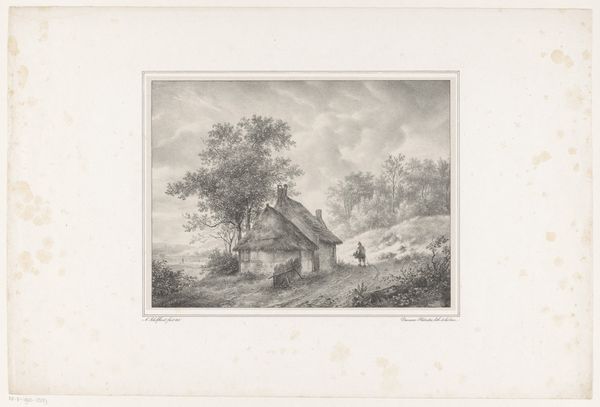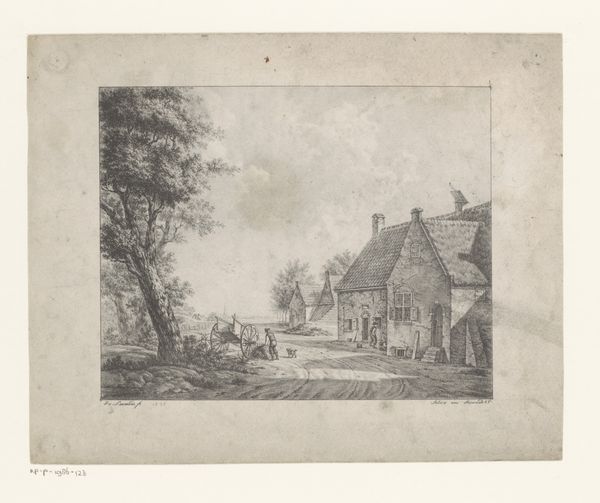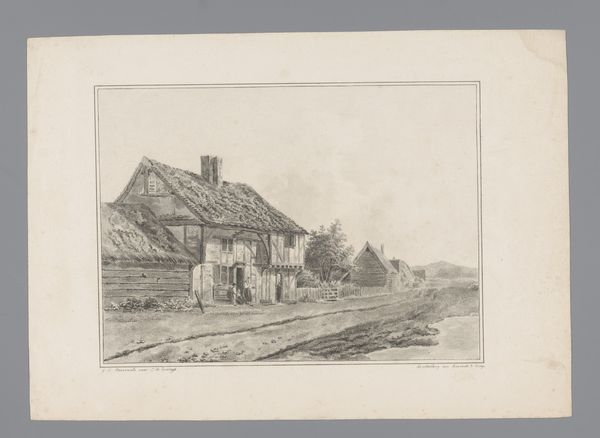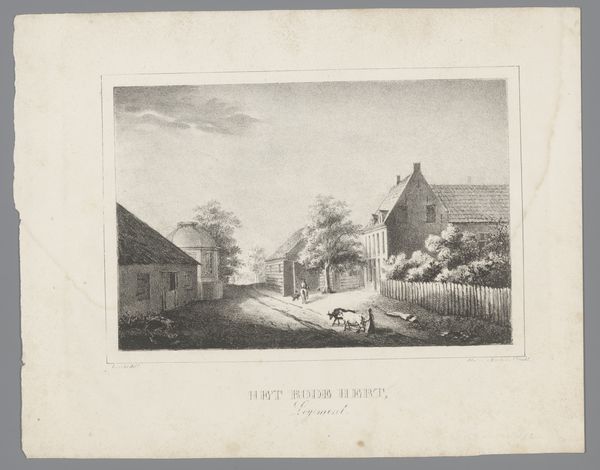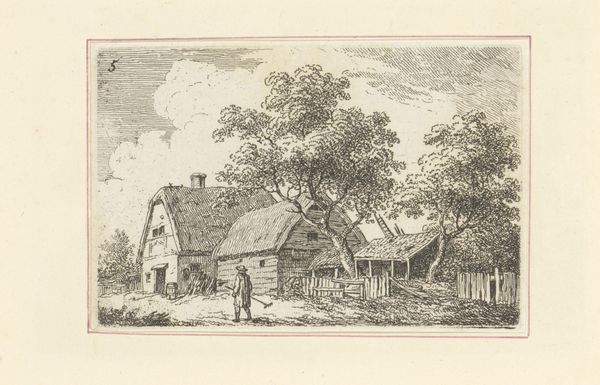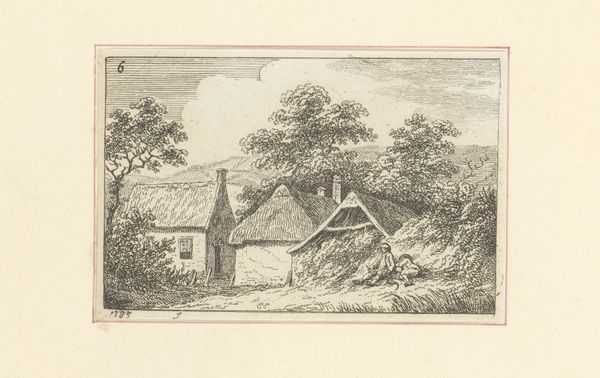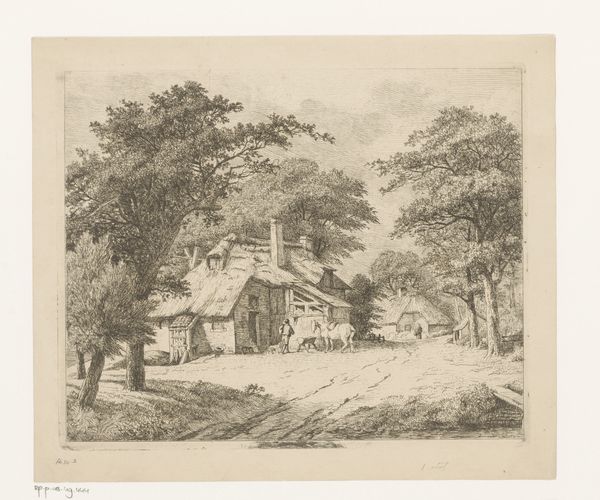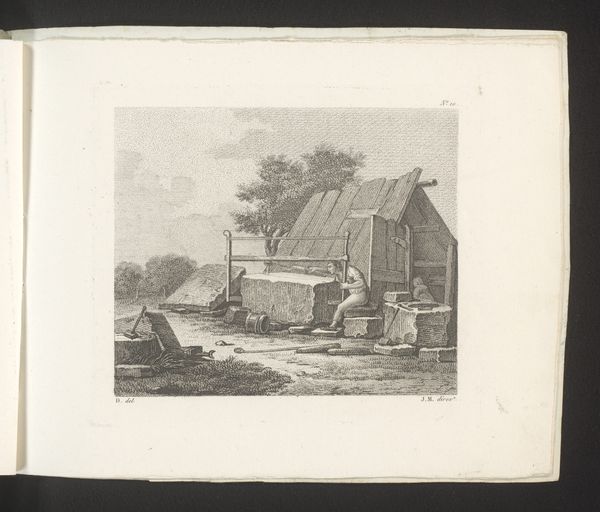
Twee mannen aan een tafel voor herberg het Molentje aan de Amstel 1810
0:00
0:00
anthonievandenbos
Rijksmuseum
drawing, pen
#
drawing
#
landscape
#
romanticism
#
pen
#
genre-painting
Dimensions: height 119 mm, width 197 mm
Copyright: Rijks Museum: Open Domain
Curator: The idyllic scene before us is "Two Men at a Table in front of the Inn the Little Mill on the Amstel," a pen drawing by Anthonie van den Bos, created around 1810. What strikes you most upon first glance? Editor: A quiet stillness pervades this piece. Despite the figures, it's imbued with a sense of solitude and introspection, as though we've stumbled upon a secret moment. Curator: The inn itself—"Het Molentje"— functions as a powerful emblem here. Inns throughout history appear time and again. What symbolic role does the "inn" hold in the collective psyche? Editor: Inns historically represented more than just lodging; they were spaces of convergence. Think of them as proto-public spheres, accessible across socioeconomic lines. This gathering space would naturally foment social bonds and cultural exchange in otherwise stratified communities. Are these figures a chance meeting? A political assignation? Curator: Fascinatingly, you highlight how seemingly humble spaces hold a special role in forming communal memories and shared narratives. Zooming out, can we frame its broader art historical positioning, since van den Bos was working during the Romantic era. Consider that such artists looked to rural settings. Why romanticize rural places? Editor: It is so easy to essentialize and idealize "rural life." Looking closer, that roofline is weathered, those walls have aged, and that the artist hasn't airbrushed those realities. Curator: Note the density and detail of line work van den Bos uses here; you mentioned these well-observed realities are not sanitized or picturesque in the way one might imagine with rural subjects of Romanticism. There's honesty, and almost a loving preservation in his rendition. How should the modern viewer receive works like this one? Editor: Given its cultural weight as a meeting place, can we acknowledge this rural setting, warts and all, without falling into historical erasure, especially when engaging with images of a culture, landscape, or historical moment? Curator: Exactly, through symbols and keen observation, the artist allows a simple drawing to spark conversations that bridge centuries. Editor: It is our duty as cultural workers to carry on the conversations begun in places like the Molentje, both then and now.
Comments
No comments
Be the first to comment and join the conversation on the ultimate creative platform.
